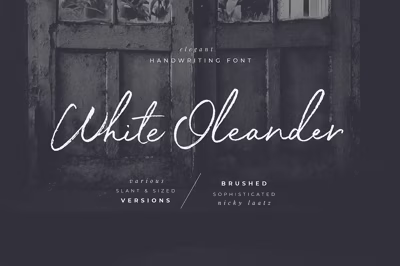Typography SEO: Do Fonts Actually Affect Your Google Rankings?
Typography SEO: Do Fonts Actually Affect Your Google Rankings?
The relationship between typography and SEO has sparked intense debate among American digital marketers, web developers, and SEO professionals. While Google's John Mueller has stated that fonts don't directly impact rankings, the reality is far more nuanced. In 2025, typography choices influence multiple ranking factors that can significantly affect your website's search performance.
Understanding this complex relationship is crucial for anyone serious about SEO success in the competitive American market. While Google may not have a "font ranking algorithm," your typography decisions impact user experience metrics, page speed, accessibility scores, and mobile usability – all confirmed ranking factors that can make or break your search visibility.
Google's Official Stance vs. Real-World Impact
Google's representatives have consistently maintained that font choices themselves don't directly influence search rankings. John Mueller, Google's Search Advocate, has explicitly stated that the search engine doesn't evaluate websites based on their typography selections. This official position, however, only tells part of the story.
The disconnect lies in understanding direct versus indirect ranking factors. While Google doesn't score websites based on whether they use Helvetica or Times New Roman, the font choices you make trigger a cascade of measurable impacts on confirmed ranking factors.
Think of typography as a multiplier rather than a direct ranking signal. Poor font choices can amplify negative user experience signals, while optimal typography enhances positive metrics that Google definitely measures and weighs heavily in ranking decisions.
This distinction matters enormously for American businesses competing in search results. Companies that ignore typography's indirect SEO impact often find themselves losing rankings to competitors who understand and optimize these connections.
Core Web Vitals: Where Typography Meets Rankings
Google's Core Web Vitals represent the most direct connection between typography and search rankings. These metrics – Largest Contentful Paint (LCP), First Input Delay (FID), and Cumulative Layout Shift (CLS) – are confirmed ranking factors that typography choices directly influence.
Largest Contentful Paint (LCP): This metric measures how quickly the largest content element loads on your page. Since text often constitutes the largest visual element, font loading speed directly impacts LCP scores. Heavy font files, multiple font requests, or inefficient font loading strategies can push LCP times beyond Google's recommended thresholds, hurting your rankings.
Cumulative Layout Shift (CLS): This measures visual stability during page loading. Fonts that load asynchronously can cause text to reflow when they replace fallback fonts, creating layout shifts that hurt CLS scores. Websites with poor CLS scores face ranking penalties, making font loading optimization crucial for SEO success.
American websites consistently losing rankings often trace performance issues back to typography choices. Sites loading multiple font weights, using inefficient web fonts, or failing to implement proper font loading strategies regularly see Core Web Vitals scores that hurt their search performance.
Real-world data from American e-commerce sites shows that optimizing font loading can improve LCP scores by 20-40%, often enough to move sites from "poor" to "good" Core Web Vitals ratings – improvements that correlate with measurable ranking increases.
User Experience Signals: The Hidden SEO Impact
Google's algorithms increasingly prioritize user experience signals, and typography profoundly influences how users interact with your content. While these metrics aren't as explicitly disclosed as Core Web Vitals, their SEO impact is substantial and measurable.
Bounce Rate Correlation: Websites with poor typography consistently show higher bounce rates. Users encountering difficult-to-read fonts, inadequate font sizes, or poor color contrast leave quickly – sending negative signals to Google about content quality and user satisfaction.
Dwell Time Impact: Typography directly affects how long users spend reading your content. Studies of American news websites show that optimal font choices can increase average session duration by 15-25%. Since Google likely measures dwell time as a quality signal, typography indirectly influences rankings through user engagement metrics.
Scroll Depth and Engagement: Readable typography encourages users to consume more content, increasing scroll depth and page engagement metrics. Content that's comfortable to read generates more shares, comments, and return visits – all positive signals that can boost search performance.
Mobile Experience Scores: With mobile-first indexing, typography choices that work poorly on smartphones can hurt your rankings. Fonts that are too small, too light, or poorly spaced on mobile devices create negative user experiences that Google's algorithms can detect and penalize.
Accessibility: The Overlooked SEO Factor
Web accessibility has become an increasingly important ranking factor, and typography plays a central role in creating accessible experiences. Google's algorithms are sophisticated enough to evaluate accessibility signals, making font choices an indirect but significant SEO consideration.
Color Contrast Requirements: Insufficient contrast between text and background colors hurts accessibility scores. While Google hasn't explicitly confirmed contrast as a ranking factor, websites failing WCAG guidelines often see performance drops in search results.
Font Size Standards: Text smaller than 16px on mobile devices can trigger accessibility warnings and hurt user experience metrics. Google's mobile-first indexing means that mobile typography problems directly impact your overall search performance.
Readability Algorithms: Google's systems can evaluate content readability, and font choices significantly impact these scores. Complex or decorative fonts that hurt readability can indirectly damage your content's perceived quality and search performance.
American businesses in regulated industries like healthcare and finance face additional pressure to maintain accessible typography, as legal compliance and SEO optimization increasingly overlap.
Page Speed: The Direct Typography-SEO Connection
Page loading speed remains a confirmed ranking factor, and font choices directly impact loading performance. This creates one of the clearest connections between typography decisions and search rankings.
Font File Optimization: Large font files slow page loading, hurting speed scores that directly influence rankings. Websites loading multiple font weights or unoptimized font formats consistently underperform in speed tests and search rankings.
HTTP Request Reduction: Each additional font represents another HTTP request, potentially slowing page loading. Sites using many fonts often struggle with speed optimization, creating SEO disadvantages compared to competitors with streamlined typography.
Caching and CDN Benefits: Fonts served through optimized CDNs (like Google Fonts) provide performance advantages that can improve speed scores and, consequently, search rankings.
Variable Font Advantages: Modern variable fonts can provide multiple styling options within single files, reducing HTTP requests and improving loading performance – benefits that translate to better Core Web Vitals scores and search performance.
Mobile-First Indexing Implications
Google's mobile-first approach means that typography choices for mobile devices primarily determine your search rankings. Poor mobile typography can hurt your rankings even if your desktop typography is perfect.
Touch Target Optimization: Font sizes and spacing that create adequate touch targets improve mobile usability scores. Poor mobile typography that leads to accidental clicks or navigation difficulties can hurt your mobile experience ratings.
Responsive Typography: Fonts that scale properly across devices ensure consistent user experiences. Websites with typography that breaks on certain devices or screen sizes face mobile usability penalties that impact overall rankings.
Loading Performance on Mobile: Mobile users often have slower connections and less powerful devices, making font loading optimization even more critical for mobile SEO success.
Measuring Typography's SEO Impact
Tracking the connection between typography changes and SEO performance requires monitoring specific metrics that reveal indirect impacts.
Core Web Vitals Monitoring: Use Google Search Console and PageSpeed Insights to track how typography changes affect LCP and CLS scores. Improvements in these metrics often correlate with ranking increases.
User Engagement Analytics: Monitor bounce rates, session duration, and pages per session to understand how typography changes affect user behavior. Positive changes in these metrics often precede ranking improvements.
Accessibility Auditing: Regular accessibility audits reveal typography issues that could hurt SEO performance. Tools like WAVE and axe can identify font-related accessibility problems before they impact rankings.
Mobile Performance Tracking: Specifically monitor mobile typography performance, as mobile-first indexing makes mobile typography issues more damaging to overall SEO performance.
Best Practices for SEO-Friendly Typography
Optimizing typography for SEO requires balancing aesthetic goals with technical performance and user experience requirements.
Performance Optimization: Choose fonts with optimized file sizes, implement efficient loading strategies, and limit font variations to essential weights and styles. These optimizations directly improve Core Web Vitals scores.
Mobile-First Design: Prioritize mobile typography experiences, ensuring adequate font sizes, proper spacing, and optimal readability on smaller screens.
Accessibility Compliance: Maintain sufficient color contrast, readable font sizes, and clear typography hierarchy to support both user accessibility and SEO performance.
Loading Strategy: Implement proper font loading techniques, including font preloading for critical fonts and appropriate fallback strategies to minimize layout shifts.
Testing and Optimization Strategies
A/B Testing: Test different typography choices while monitoring SEO metrics to understand which fonts and implementations provide the best balance of aesthetics and performance.
Performance Monitoring: Regularly audit font loading performance and Core Web Vitals scores to identify optimization opportunities that could improve search rankings.
User Experience Testing: Conduct user testing to understand how typography choices affect reading comfort, comprehension, and engagement – factors that indirectly influence SEO performance.
Industry-Specific Considerations
Different industries face unique challenges when balancing typography aesthetics with SEO requirements.
E-commerce Sites: Product pages require fonts that load quickly and display clearly across many different products and categories. Typography choices that slow loading or hurt mobile usability can directly impact conversion rates and search performance.
Content Publishers: News sites and blogs need typography that encourages extended reading while loading efficiently. Poor typography choices can hurt both user engagement metrics and page speed scores.
Professional Services: Law firms, consultancies, and other professional services need typography that conveys authority while meeting accessibility standards and performance requirements.
The Future of Typography SEO
As Google's algorithms become more sophisticated at evaluating user experience, the connection between typography and SEO will likely strengthen rather than weaken.
AI-Powered Readability Assessment: Future algorithms may directly evaluate typography quality, making font choices increasingly important for SEO success.
Advanced Performance Metrics: New performance metrics may emerge that more directly measure typography's impact on user experience and search rankings.
Accessibility Standards: Increasing legal and algorithmic emphasis on accessibility will make accessible typography choices even more important for SEO success.
So, do fonts actually affect Google rankings? The answer is both no and yes. While Google doesn't rank websites based on font choices alone, typography decisions influence multiple confirmed ranking factors including Core Web Vitals, user experience metrics, accessibility scores, and mobile usability ratings.
For American businesses serious about SEO success in 2025, typography optimization isn't optional – it's a crucial component of comprehensive search engine optimization strategy. The most successful websites will be those that choose fonts strategically, considering both aesthetic appeal and SEO performance implications.




